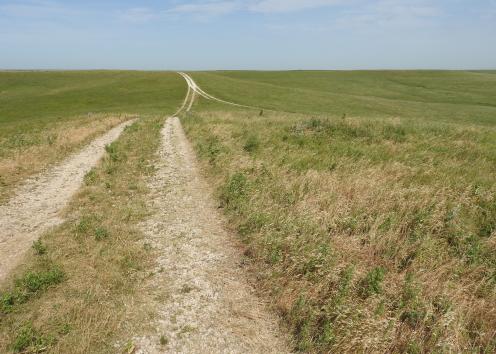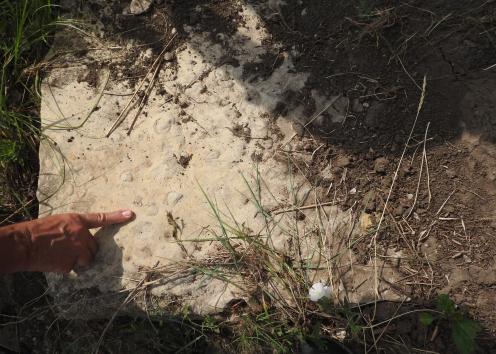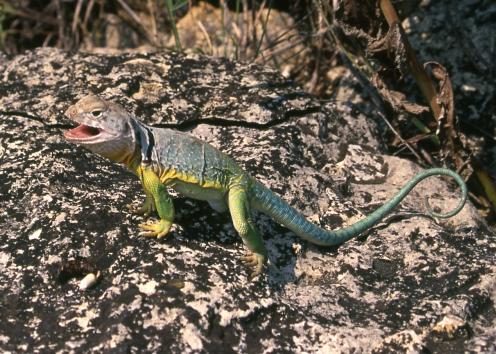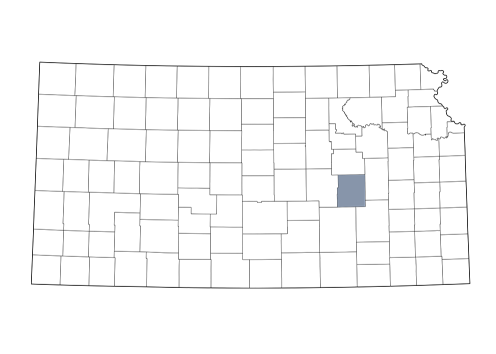Tallgrass Prairie National Preserve

Tallgrass Prairie National Preserve is the only unit in the U.S. National Park System devoted to North America's tallgrass prairie ecosystem, which once covered 170 million acres from Kansas to Indiana and Canada to Texas. Less than 4 percent of the natural prairie remains today, most in the Kansas Flint Hills.
Because the area is hilly and the soils are thin and rocky, crop farmers generally bypassed the Flint Hills and cattle ranching became the agricultural mainstay. Limited plowing and urban development serendipitously saved the prairie.
Rocks at the preserve and in the surrounding Flint Hills were formed from sediment deposited in a fluctuating shallow sea that covered the region during the Permian Period about 280 million years ago. As the sea rose and fell, different types of sediment were deposited on the sea floor and eventually compressed into different layers of rock—mainly limestones and shales—stacked one on top of the other.
Another rock, chert, helped shape the hills once water started to erode through the layers. Harder than limestone, the chert—also called flint—is interspersed in some of the limestone layers and shows the erosional process wherever it was present. That is, flowing water and other erosional forces wear away chert-less limestone faster than chert-filled limestone. As a result, chert caps and protects the hilltops and also helps form hillside benches—long, narrow strips of fairly horizontal strips of rock bounded by steeper slopes above and below. Shale, more easily eroded than limestone, forms the steep slopes between the benches.
Florence limestone, a rubbly rock layer composed of limestone and chert, caps the highest, more-rounded hills at the preserve. The Threemile and Schroyer limestones also contain some fairly thick layers of chert, with the Threemile forming the shorter, flat-topped hills.
Other limestone units in the area include the Funston and the Cottonwood. The Funston, named after a military camp at nearby Fort Riley, was used in the construction of many of the rock fences on the property and the walls of the barn. The Cottonwood, named after Cottonwood Falls to the south, is a common building stone that was used in the construction of the ranch house and other buildings at the Tallgrass Prairie National Preserve, the Chase County Courthouse in Cottonwood Falls, and the State Capitol in Topeka.
Invertebrate marine fossils can be found in many of the limestones at the preserve. The Cottonwood, for example, contains single-celled animals called fusulinids that are shaped like a grain of wheat. Brachiopods, clams, snails, bryozoans, and crinoids are common in several of the other units, and even an occasional trilobite will turn up.
The Flint Hills are bright green interspersed with colorful wildflowers in the spring and rusty red and brown in the fall. Tallgrass Prairie National Preserve is home to 400 species of plants (including big bluestem, little bluestem, and Indian grass), 200 species of birds, 30 species of mammals, 53 species of reptiles, and 28 species of amphibians. As many as 10 million insects per acre live on the preserve.
The Tallgrass Prairie National Preserve land was a homestead first called Spring Hill Ranch (for the many nearby springs) when it was established in 1860 and later referred to as the Z Bar Ranch because of its Z— brand. The original limestone Second Empire-style house, large barn, and Fox Creek School are still standing. Covering 10,894 acres, the preserve is managed jointly by the National Park Service and the Nature Conservancy, with support from the Kansas Park Trust.




